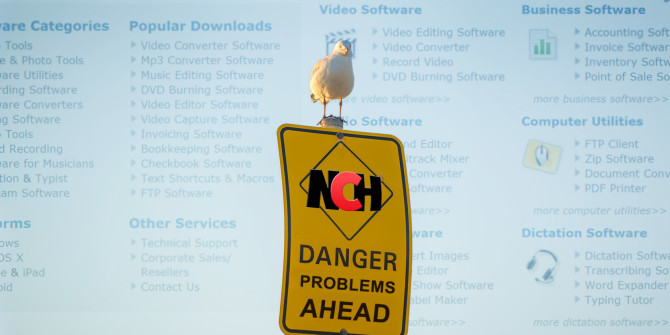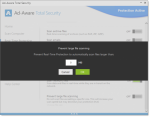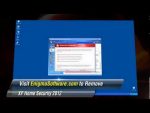Plenty of PC users have sent in reports to various security sites relinquishing data related to their system being attacked or infiltrated by a fake security program by the name of Vista Security 2012. Not only are those running Windows Vista being affected, but those running Windows XP and Windows 7 are in the mix. Shortly after the reports rolled in, security sources reported detailed information on the Vista Security 2012 program identifying it as a rogue anti-spyware program or what some of you may consider to simply be a fake security program.
Vista Security 2012 is an imitative security app for the PC that renders a hoax in order to make computer users believe that it is a viable solution to detecting and removing malware from their PC. In a valid attempt to remove the Vista Security 2012 program, computer users have faced a road block because Vista Security 2012 is unable to be removed through conventional methods including use of the “Programs and Features” option in the Windows control panel. Moreover, Vista Security 2012 cannot be uninstalled through any other means except by manually deleting individual files/registry entries or using an updated antispyware program. The easiest and safest way to remove Vista Security 2012 remains to be with an antispyware program that has been recently updated with the latest definition files. However, manual removal may be performed by finding all of the entries that we have listed below for you.
How Can You Remove Vista Security 2012?
Vista Security 2012 can be very difficult to manually remove if you are an inexperienced computer user. Not to mention, Vista Security 2012 has been known to populate the Windows Registry with many different entries and removing the wrong entries could render a PC damaged or useless. The use of a reputable antispyware or antivirus tool is recommended to safely remove Vista Security 2012 from your Windows computer.
To easily remove Vista Security 2012, find the following process and end them in the task manager. After that is done, delete each related Vista Security 2012 file from your hard drive. In additional to locating the following processes, it is recommended that you delete the Vista Security 2012 registry entries listed below as well. It is also a good idea to uninstall the Vista Security 2012 application via your add/remove programs function found in the Windows Control Panel if your system recognizes Vista Security 2012 has an installed program.
Vista Security 2012 files (and folders) to remove:
- %%AppData%\Roaming\Microsoft\Windows\Templates\67sdh53ygdhilutew20ijnbgc
- %LocalAppData%\u3f7pnvfncsjk2e86abfbj5h
- %AppData%\Local\67sdh53ygdhilutew20ijnbgc
- %UserProfile%\Templates\u3f7pnvfncsjk2e86abfbj5h
- %AllUsersProfile%\67sdh53ygdhilutew20ijnbgc
- %AllUsersProfile%\Application Data\u3f7pnvfncsjk2e86abfbj5h
- %Temp%\u3f7pnvfncsjk2e86abfbj5h
Vista Security 2012 registry entries to remove:
- HKEY_CLASSES_ROOT\.exe\shell\open\command “(Default)” = ‘”%UserProfile%\Local Settings\Application Data\[RANDOM CHARACTERS].exe” /START “%1″ %*’
- HKEY_CURRENT_USER\Software\Classes\exefile\shell\runas\command “(Default)” = ‘”%1″ %*’
- HKEY_CURRENT_USER\Software\Classes\exefile\shell\open\command “IsolatedCommand” = ‘”%1″ %*’
- HKEY_CURRENT_USER\Software\Classes\.exe\shell\runas\command “(Default)” = ‘”%1″ %*’
- HKEY_CURRENT_USER\Software\Classes\.exe\DefaultIcon “(Default)” = ‘%1″ = ‘”%UserProfile%\Local Settings\Application Data\[RANDOM CHARACTERS].exe” /START “%1″ %*’
- HKEY_CURRENT_USER\Software\Classes\.exe\shell\open\command “IsolatedCommand” = ‘”%1″ %*’
- HKEY_LOCAL_MACHINE\SOFTWARE\Clients\StartMenuInternet\IEXPLORE.EXE\shell\open\command “(Default)” = ‘”%UserProfile%\Local Settings\Application Data\[RANDOM CHARACTERS].exe” /START “%Program Files%\Internet Explorer\iexplore.exe”‘
- HKEY_CURRENT_USER\Software\Classes\exefile\shell\runas\command “IsolatedCommand” – ‘”%1″ %*’
- HKEY_CURRENT_USER\Software\Classes\exefile\shell\open\command “(Default)” = ‘”%UserProfile%\Local Settings\Application Data\[RANDOM CHARACTERS].exe” /START “%1″ %*’
- HKEY_CURRENT_USER\Software\Classes\exefile “(Default)” = ‘Application’
- HKEY_LOCAL_MACHINE\SOFTWARE\Clients\StartMenuInternet\IEXPLORE.EXE\shell\open\command “(Default)” = ‘”%UserProfile%\Local Settings\Application Data\[RANDOM CHARACTERS CHARACTERS].exe” /START “%Program Files%\Internet Explorer\iexplore.exe”‘
- HKEY_CURRENT_USER\Software\Classes\.exe “(Default)” = ‘exefile’
- HKEY_LOCAL_MACHINE\SOFTWARE\Clients\StartMenuInternet\FIREFOX.EXE\shell\safemode\command “(Default)” = ‘”%UserProfile%\Local Settings\Application Data\[RANDOM CHARACTERS].exe” /START “%Program Files%\Mozilla Firefox\firefox.exe” -safe-mode’
- HKEY_CLASSES_ROOT\exefile\shell\open\command “(Default)” = ‘”%UserProfile%\Local Settings\Application Data\[RANDOM CHARACTERS].exe” /START “%1″ %*’
- HKEY_CURRENT_USER\Software\Classes\exefile\DefaultIcon “(Default)” = ‘%1″
- HKEY_CURRENT_USER\Software\Classes\exefile “Content Type” = ‘application/x-msdownload’
- HKEY_CURRENT_USER\Software\Classes\.exe\shell\runas\command “IsolatedCommand” = ‘”%1″ %*’
- HKEY_CURRENT_USER\Software\Classes\.exe “Content Type” = ‘application/x-msdownload’
- HKEY_LOCAL_MACHINE\SOFTWARE\Clients\StartMenuInternet\FIREFOX.EXE\shell\open\command “(Default)” = ‘”%UserProfile%\Local Settings\Application Data\[RANDOM CHARACTERS].exe” /START “%Program Files%\Mozilla Firefox\firefox.exe”‘





